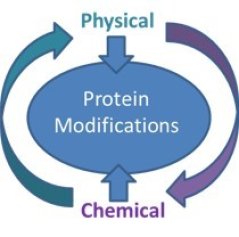
Protein functionalization
During extraction and food processing, proteins can be modified in multiple ways. Physical modifications (for example thermal treatment) and chemical modifications (for example ingredient interactions) can not only influence each other, but also significantly affect the structural properties and functionality of proteins. Such process-induced modifications are common-place but highly complex. But once understood in detail, they represent a new possibility for the targeted functionalization of proteins during extraction or processing in food. Since every raw material differs in composition and structure, the possibilities for explorations are vast and the outcome has great potential:
Protein functionalization enhances and broadens the functionality of existing protein sources and thus their effectivity, while it can also be used to upgrade and recover proteins from waste-streams. Ultimately, this makes an important contribution to meeting the high global demand for sustainable protein sources.

The research group
Our group studies the separation principles, including the molecular interactions and molecular modifications of proteins during processing, and their consequences for the functionality of the ingredient and final food product (Figure 1). Emphasis will be on protein-protein interactions and interactions of proteins with other components (such as flavours and phenolic components), in relation to the component’s environment such as the presence of interfaces, and/or within a food matrix (emulsion, foam or gel).
